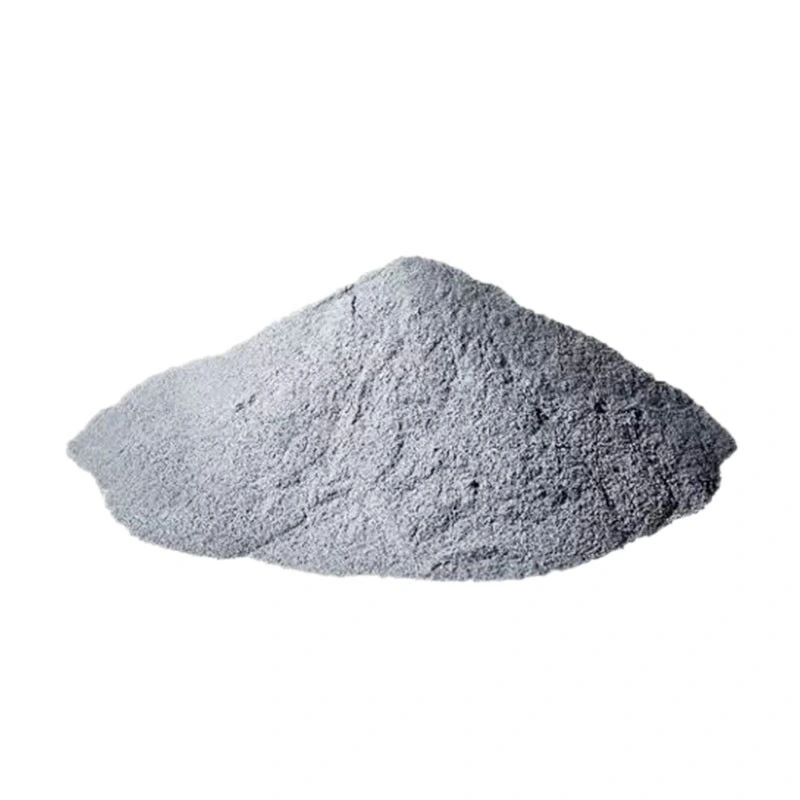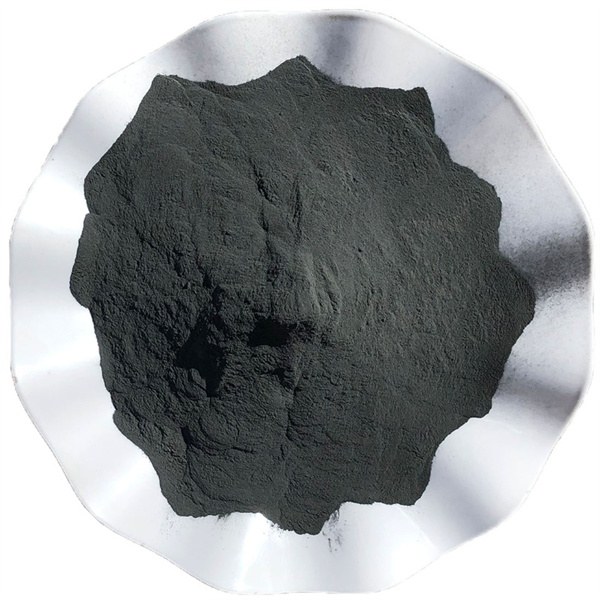전자빔 적층 제조 (EBAM)은 전자빔 에너지원을 사용하여 재료를 융합하는 금속 3D 프린팅 프로세스입니다. 이 가이드에서는 이 기술을 채택할 때 고려해야 할 EBAM 시스템, 프로세스, 재료, 응용 분야, 이점 및 고려 사항을 살펴봅니다.
전자빔 적층 제조 소개
전자 빔 적층 제조(EBAM)는 고출력 전자 빔을 에너지원으로 사용하여 금속 공급 원료를 CAD 데이터에서 직접 완전히 조밀한 부품으로 레이어별로 융합하는 금속 3D 프린팅의 한 유형입니다.
EBAM 기술의 주요 속성:
- 전자빔 전원을 사용하여 재료를 녹입니다.
- 금속 분말을 층별로 추가하여 부품 제작
- 고밀도로 그물 모양에 가까운 파트 생성
- 일반적인 소재는 티타늄, 니켈 합금, 강철입니다.
- 다른 금속 적층 제조 공정보다 더 큰 빌드 볼륨
- 빠른 빌드를 위한 높은 증착 속도
- 평균 부품 정확도 ±0.3mm
- 레이저 공정에 비해 낮은 잔류 응력
- 크고 복잡한 금속 부품에 이상적
- 감산 기법 대비 낭비 감소
EBAM은 기존 제조 방식으로는 불가능했던 혁신적인 디자인을 가능하게 합니다. 하지만 다른 적층 공정과 마찬가지로 설계 및 적용 시 고려해야 할 사항이 있습니다.
어떻게 전자빔 적층 가공 공장
EBAM 프로세스는 다음과 같이 구성됩니다:
- 금속 분말의 얇은 층 증착 및 레벨링
- 전자빔을 스캐닝하여 선택적으로 녹이는 영역
- 빌드 플레이트를 내리고 레이어링/용융 반복하기
- 파우더 베드에서 완성된 부품 제거
- 필요에 따른 후처리
전자 빔 건은 진공 조건에서 집중된 빔을 생성합니다. 빔 출력, 속도, 패턴 및 기타 파라미터를 정밀하게 제어하여 재료를 용융합니다.
EBAM 시스템에는 진공 챔버, 파우더 처리, 전자총, 제어 및 기타 하위 시스템이 필요합니다.

EBAM 장비 제조업체
산업용 EBAM 시스템의 선도적인 글로벌 공급업체는 다음과 같습니다:
| 제조업체 | 모델 | 빌드 크기 | 재료 | 가격 범위 |
|---|---|---|---|---|
| GE 애디티브 | Arcam EBM 스펙트럼 H | 1000 x 600 x 500mm | Ti, Ni, CoCr, Al, Cu, 강재 | $1.5m - $2m |
| 스키아키 | 에밤 300 | 1830 x 1220 x 910mm | Ti, 인코넬, 스테인리스 | $1.5m - $3M |
| Velo3D | 사파이어 | 680 x 380 x 380 mm | Ti, 인코넬 | $1M - $2M |
| 나노 차원 | DragonFly LDM | 330 x 330 x 330mm | 구리 | $0.5m - $1M |
시스템 선택은 생산 요구 사항, 재료, 정확도 요구 사항 및 예산에 따라 달라집니다. 숙련된 서비스 제공업체와 협력하는 것은 장비를 직접 구매하는 대신 선택할 수 있는 대안입니다.
EBAM 프로세스 특성
EBAM에는 복잡한 열, 기계 및 재료 상호 작용이 포함됩니다. 주요 프로세스 특성은 다음과 같습니다:
전자 빔 - 전력, 빔 직경, 전류, 스캔 속도, 초점
가루 - 재질, 모양, 크기 분포, 레이어 두께
진공 - 필요한 압력 수준, 가스 불순물
온도 - 예열, 용융 풀 역학, 냉각 속도
메타데이터 - 빌드 플레이트, 레이크 시스템, 차폐
스캔 전략 - 용융 풀 패턴, 빔 진동
후처리 - 열처리, HIP, 가공, 마무리
고품질 EBAM 부품을 제작하려면 파라미터 간의 관계를 이해하는 것이 중요합니다.
EBAM 설계 가이드라인
올바른 EBAM 부품 설계 관행에는 다음이 포함됩니다:
- 적층 제조 원리를 염두에 둔 설계
- 경량화를 위한 얇은 벽과 격자 구조 사용
- 서포트가 필요한 미지지 오버행 최소화
- 뒤틀림으로 이어지는 응력을 방지하기 위해 부품의 방향 조정
- 형상의 열 수축 효과 고려
- 분말 제거를 용이하게 하는 지오메트리 설계
- 외관이 아닌 기능에 초점을 맞춘 표면 엔지니어링
- 최소 벽 두께 및 피처 크기 수용
- 표면의 후처리 스톡 허용
- 복잡한 부품의 빌드 및 열 효과 시뮬레이션
- 파우더 베드 제거를 위한 고정 장치 및 인터페이스 설계
시뮬레이션 및 모델링 도구는 잔류 응력과 변형을 예측하는 데 도움이 됩니다.
EBAM 자료
다양한 금속을 다음과 같이 처리할 수 있습니다. 전자빔 적층 제조:
| 범주 | 일반적인 합금 |
|---|---|
| 티타늄 | Ti-6Al-4V, Ti-6Al-4V ELI, 상업용 순수 티타늄 |
| 니켈 초합금 | 인코넬 718, 인코넬 625, 헤인즈 282 |
| 스테인리스 스틸 | 304, 316, 17-4PH, 15-5PH |
| 공구강 | H13, 마징강 |
| 알루미늄 | AlSi10Mg, 스칼말로이 |
| 귀금속 | 골드, 플래티넘 |
| 구리 | CuCrZr, Cu, 구리 니켈 합금 |
| 코발트 크롬 | CoCrMo, Stellite |
머티리얼 속성은 EBAM 프로세스 파라미터와 후처리에 따라 크게 달라집니다.
주요 EBAM 애플리케이션
EBAM은 산업 전반의 성능 향상을 지원합니다:
| 산업 | 일반적인 EBAM 애플리케이션 |
|---|---|
| 항공우주 | 항공기 구조물, 터빈, 발사 하드웨어 |
| 전력 생성 | 고온 가스 경로 구성 요소, 하우징 |
| 석유 및 가스 | 밸브, 펌프, 컴프레서, 툴링 |
| 자동차 | 경량화 부품, 열교환기 |
| 의료 | 정형외과용 임플란트, 수술 기구 |
| 해양 | 임펠러, 프로펠러, 복합 주물 |
| 화학 | 열교환기, 교반기, 압력 용기 |
기존 제조 방식에 비해 다음과 같은 이점이 있습니다:
- 1:1의 구매 대 비행 비율로 인한 낭비 감소
- 디지털 프로세스로 인한 리드 타임 단축
- 어셈블리를 단일 부품으로 결합
- 가공에 적합하지 않은 맞춤형 형상
- 복잡한 구조에서 성능 향상
- 자격을 갖추면 확장 가능한 생산량
EBAM은 다른 방법으로는 불가능했던 차세대 제품 설계의 기회를 창출합니다.

EBAM의 장단점
장점:
- 복잡한 대형 금속 부품을 하나의 부품으로
- 격자 디자인의 견고하고 가벼운 구성 요소
- 고가의 금형이나 툴링이 필요 없음
- 감산 기법에 비해 재료 낭비 감소
- 다른 적층 제조 공정에 비해 상대적으로 빠른 빌드 속도
- 100~10,000개의 중간 규모에서 비용 효율적
- 빠른 응고로 인한 일관된 야금학
- 어셈블리를 단일 부품으로 결합
- 온디맨드 생산 및 맞춤형 디자인
- 가공 제약을 뛰어넘는 형상의 자유로움
제한사항:
- 폴리머 3D 프린팅보다 장비 비용이 높음
- 진공 호환 재료로 제한
- 기계 가공보다 낮은 정확도와 표면 마감
- 속성을 얻기 위해 종종 필요한 포스트 프로세싱
- 재활용이 필요한 스크랩 파우더 생산
- 프로세스 개발 및 시험 필요
- 높은 전력 수요에 대한 시설 고려 사항
- 열 응력으로 인해 부품이 왜곡될 수 있습니다.
- 오버행 및 최소 피처에 대한 제약 조건
- 빌드 챔버 봉투의 크기 제한
애플리케이션 요구 사항에 적합한 경우 EBAM을 통해 고부가가치 제품을 개선할 수 있습니다.
EBAM 기술 구현
EBAM을 도입할 때 고려해야 할 주요 사항은 다음과 같습니다:
- EBAM 기능이 이점을 제공하는 애플리케이션 식별
- EBAM 시스템에 대한 막대한 자본 투자 예산 책정
- 엄격한 자격 인증 프로토콜 및 표준 개발
- 최종 사용 애플리케이션에 대한 규제 요건 이해
- 파우더 베드 전문성을 갖춘 인력 고용 또는 서비스 제공업체와의 제휴
- 프로세스 시험 및 최적화를 위한 시간과 리소스 확보
- 분말 취급 절차 및 환기 실시
- 적합한 시설 인프라 및 전력 기능 제공
- 열처리와 같은 2차 처리를 위한 예산 책정
- 기계적 테스트를 수행하여 속성 검증
초기 시험에 가장 적합한 애플리케이션은 덜 중요하고 위험이 낮습니다.
EBAM을 통한 비용 절감
EBAM의 비즈니스 사례는 다음에 따라 달라집니다:
- 고가 장비는 약 $1백만~$3백만입니다.
- 프로세스 개발 및 생산을 위한 노동력
- 금속 분말 원재료 비용
- 2차 마무리 작업
- 시설, 파우더 취급 인프라
- 감산 프로세스 대비 낭비 감소
- 하위 어셈블리를 단일 부품으로 통합하기
- 기존 기술보다 짧은 개발 일정
- 100~10,000개 내외의 부품으로 경제성 향상
- 복잡한 지오메트리에 가치를 더하는 최고의 절감 효과
제조업체는 높은 AM 장비 비용을 제조상의 이점으로 상쇄해야 합니다.
다른 프로세스와 비교한 EBAM
| 프로세스 | EBAM과 비교 |
|---|---|
| CNC 가공 | EBAM을 사용하면 감산 공정으로는 가공할 수 없는 복잡한 형상을 구현할 수 있습니다. 하드 툴링이 필요하지 않습니다. |
| 금속 사출 성형 | EBAM은 높은 툴링 비용을 제거합니다. MIM보다 우수한 재료 특성. |
| 다이 캐스팅 | EBAM은 툴링 비용이 저렴합니다. 크기 제한이 없습니다. 매우 복잡한 형상을 구현할 수 있습니다. |
| 시트 적층 | EBAM은 적층형 복합재에 비해 완전 밀도 등방성 소재를 제작합니다. |
| 바인더 분사 | EBAM은 다공성 바인더를 분사하는 그린 파트에 비해 완전히 밀도가 높은 최종 부품을 제공합니다. |
| SLM | SLM은 해상도가 더 미세한 반면 EBAM은 제작 속도가 더 빠릅니다. 둘 다 조밀한 금속 부품을 제작합니다. |
각 프로세스는 애플리케이션, 배치 크기, 정확도 요구 사항 및 성능 요구 사항에 따라 특정 이점을 제공합니다.
EBAM의 향후 전망
EBAM의 도입 확대에 대한 미래는 밝습니다:
- 광범위한 생산 등급 합금 범위
- 더 큰 부품을 가능하게 하는 더 큰 빌드 엔벨로프
- 처리량 증가를 위한 빠른 빌드 속도
- 향상된 마감 및 치수 정확도
- 기술 성숙에 따른 비용 감소
- 사전/사후 처리의 추가 자동화
- 가공을 통합하는 하이브리드 시스템
- 고급 인프로세스 모니터링 시스템
- 항공우주와 같은 까다로운 산업을 위한 자격 인증
- EBAM 기능을 활용한 설계 최적화
기술이 발전함에 따라 EBAM은 더욱 다양한 산업 분야에서 제조업을 혁신할 것입니다.
자주 묻는 질문
EBAM에는 어떤 재료가 사용되나요?
티타늄, 니켈 합금, 공구강, 스테인리스강, 알루미늄 합금 및 귀금속을 가공할 수 있습니다.
EBAM 부품의 정확도와 마감은 어떻게 되나요?
치수 정확도는 ±0.3mm가 일반적이며 표면 거칠기는 약 25-125μm Ra입니다.
EBAM 부품에는 어떤 포스트 프로세싱이 사용되나요?
열처리, HIP 및 기계 가공이 사용될 수 있습니다. 플라즈마 스프레이 코팅도 일반적입니다.
EBAM은 얼마나 큰 부품을 생산할 수 있나요?
일반적인 제작 부피는 500mm x 500mm x 500mm에서 대형 시스템의 경우 최대 2m x 1m x 1m까지입니다.
빼기 방식에 비해 어떤 이점이 있나요?
EBAM은 폐기물을 줄이면서 그물 모양에 가까운 부품을 생성하고 어셈블리를 하나의 복잡한 구성 요소로 통합합니다.
어떤 산업에서 EBAM을 사용하나요?
항공우주, 에너지, 자동차, 석유 및 가스, 의료 분야는 EBAM의 얼리 어답터입니다.
EBAM 장비를 운영하려면 어떤 전문 지식이 필요하나요?
파우더 베드 공정, 야금 및 후처리 경험이 있는 숙련된 기술자가 필요합니다.
어떤 안전 예방 조치가 필요하나요?
환기, 모니터링 장비, 개인 보호 장비, 안전한 파우더 취급은 매우 중요합니다.
기존 제조 방식과 비교했을 때 비용은 어떻게 되나요?
복잡한 디자인의 경우 100~10,000개 단위의 중간 규모 생산에서 EBAM은 비용 효율성이 높아집니다.
EBAM 프로세스에 대해 간단히 설명해 주시겠어요?
EBAM은 CAD 데이터를 기반으로 전자빔이 층별로 선택적으로 녹여 부품을 제작하는 방식으로 금속 분말을 층에 증착합니다.
